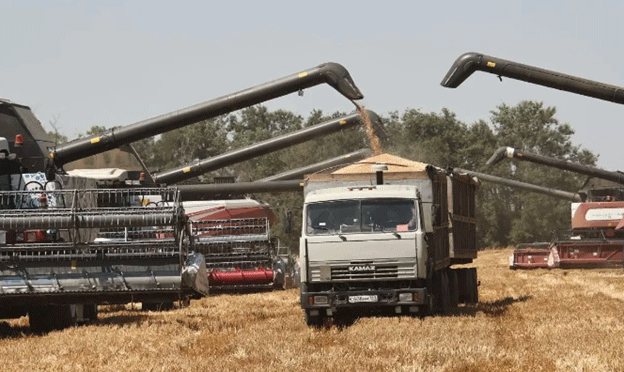In 2024, North Ossetia’s agricultural sector accomplished a significant feat by harvesting 548,860 tons of grain and leguminous crops, including 483,400 tons of spring grain, despite facing severe weather challenges. Crops were harvested from 144,917 hectares, reflecting impressive resilience and adaptability among the region’s farmers.
Weather Challenges: A Test of Strength
This year, North Ossetian farmers faced:
- Strong winds and hail, which damaged 3,200 hectares of winter and spring crops.
- Soil drought, negatively affecting the productivity of corn, soy, guar, and sunflower across 18,800 hectares.
Such conditions posed significant risks to crop yields, highlighting the vulnerabilities of agricultural systems to climate variability.
Comparative Insights and Regional Data
To contextualize North Ossetia’s success:
- In 2023, Russia’s total grain harvest reached 153.8 million tons, one of the highest in its history, with the North Caucasus contributing significantly.
- North Ossetia’s yield of approximately 3.79 tons per hectare in 2024 aligns with average regional performances, despite the challenging conditions.
Key Factors Behind Success
- Improved Farming Techniques: Farmers employed precision agriculture tools and stress-tolerant crop varieties.
- Irrigation and Water Management: Enhanced irrigation strategies mitigated the impact of soil drought.
- Professional Expertise: Agronomists and agricultural engineers provided timely advice, ensuring optimal crop management.
Lessons for Future Resilience
The 2024 harvest underscores the importance of:
- Expanding the use of drought-resistant crop varieties.
- Investing in robust infrastructure, such as windbreaks and advanced irrigation systems.
- Strengthening regional climate adaptation strategies to safeguard food security.
North Ossetia’s 2024 grain harvest is a testament to the determination and innovation of its agricultural community. Despite formidable weather challenges, the region not only met its production targets but also set an example of resilience in the face of climate uncertainty. As climate pressures intensify, such achievements highlight the importance of adaptability and investment in sustainable agricultural practices.
Error





